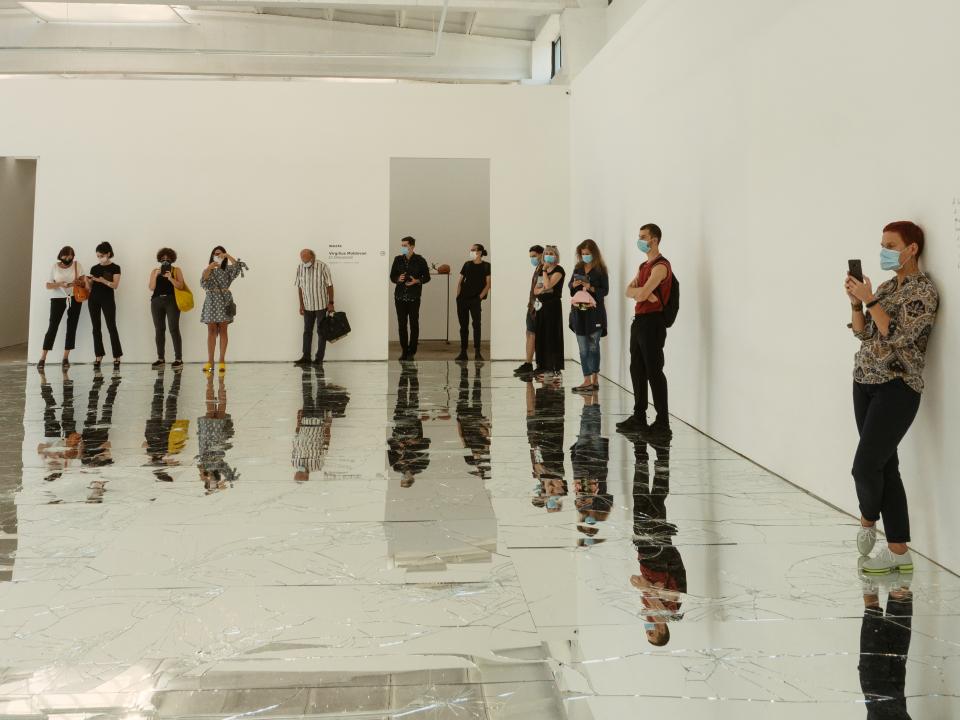Covid-19 has accelerated the inevitable digital transformation within academia. With university teaching moved online, academics and educators are being forced to think “digital first”.
Yet despite widespread acknowledgement of the importance of leveraging digital tools to engage students, public-facing digital output and impact initiatives are still seen as extra “distractions from more traditional forms of productivity”, as Tristan Grunow of Pacific University argues.
He highlights how existing methods of internal and external evaluation, used for hiring decisions and tenure, provide little incentive for scholars to value digital scholarship and public engagement work.
I set out to reimagine this relationship by designing an ambitious module that placed public-facing digital output at the centre of the course.
The project demonstrated that when approached in an integrated manner, public impact initiatives can be highly effective in reinforcing core pedagogical goals.
Here, I outline three examples that provide important insights to help university educators meet the mounting and interconnected challenges of public relevance, inclusive education, community engagement, communicating research to diverse audiences, cross-sector collaboration and student employability.
Digital first
As part of a Literature & Society course exploring Afro-Japanese encounters at Rikkyo University, the first step to going digital was to produce a bilingual introductory video that gave an overview of class content.
The students commented on how refreshing it was to be welcomed back to a new semester with an introduction that did not lament the continued need for virtual teaching. Rather, the video explained how the students would be able to develop digital skills and get involved in public engagement. I edited the video to be engaging and appealing to audiences beyond the university, giving the public a snapshot of what we learn via social media.
In addition to communicating key messages, the video visualised and brought to life through image and sound frequently hidden Afro-Japanese connections, in line with one of the main class objectives.
- Resources for fostering creativity in higher education
- How to be a civic university post pandemic
- Enhance your research through public engagement and collaboration
Collaboration outside the academy
A collaboration with the British Embassy in Japan to develop a more inclusive cultural diplomacy strategy in response to the Black Lives Matter movement provided the first public engagement opportunity for students.
Our class created a package of online content in Japanese to share as part of the embassy’s first ever Black History Month campaign.
Students curated a Black History Month Spotify playlist that they thought would appeal to a Japanese audience. Their artist and song selections led to deeper critical class discussions about how Japan has “gazed” at Britain historically and in what forms Japanese people wish to consume “blackness”.
We went from passively learning about Afro-Japanese pasts to making history by proactively creating Afro-Japanese futures. This shows how digital platforms offer a crucial vehicle for the humanities to make timely, influential contributions to pressing issues in society.
Giving assignments real-world contexts
For the final assignment, students were asked to imagine the future of Afro-Japanese interactions rooted in our class discussions. Led by their personal interests and building on their skills, they produced a series of digital projects that expressed Afro-Japanese futures.
Students gave the task rave reviews as one of their most memorable university experiences. It not only offered much-needed respite from the everyday grind of lockdown learning but also enabled them to explore how their individual interests and strengths could be applied to different fields.
One student who was interested in the intersection between entertainment and political commentary produced a trap rap video satirising the Japanese government’s response to the pandemic. Another interested in tourism produced a “green book” tourist map of Japan to illustrate how a “black gaze” could reimagine Japan’s tourism industry. A student passionate about dancing invented a new style of movement that merged aesthetics from Afrobeats and traditional Japanese dance.
The project was an opportunity for the students to freely discover how they could practically translate their passions and liberal arts education into real-world contexts.
Alongside my internal grading, I partnered with an influential creative agency, Melanin Unscripted, to judge and honour the best projects. This academia-industry partnership, linking the curriculum with the workplace and market trends, focused attention on student employability and how humanities training could be applied in innovative ways to business, government policy or other public-private organisations.
I partnered with black-owned and local businesses in Tokyo to provide prizes and strengthen the university’s links with the local community.
I discovered that a more creative project-based approach was far more inclusive than limiting assessment to traditional essays or exams. This was partly due to varying levels of English fluency within our class but also because some students’ strengths lie elsewhere.
All the projects will be publicly available to view from anywhere in the world via our class’s virtual reality gallery, with written explanations via an online Medium publication, from 15 February 2021.
Using the practical to reinforce the theoretical
A key barrier to greater public-facing digital output in academia is the perception that the “practical” distracts or detracts from the theory.
However, this initiative to create future Afro-Japanese encounters and exhibit them to the public in a virtual space was informed by and reinforced core theoretical lessons of our course.
It helped students probe more deeply into questions related to space and time that our course seeks to critically engage with: in what spaces, imaginary or real, have Afro-Japanese encounters taken place? Is it possible to imagine futures without a past?
I hope projects like these will support the promotion of digital scholarship for public engagement from its minor status as an “add-on” to a valuable tool that can be creatively leveraged to enhance learning and achieve major goals within higher education.
Warren Stanislaus is an associate lecturer in the Global Liberal Arts programme at Rikkyo University and a PhD candidate in modern Japanese history at the University of Oxford.
If you would like advice and insight from academics and university staff delivered direct to your inbox each week, sign up for the Campus newsletter.




comment